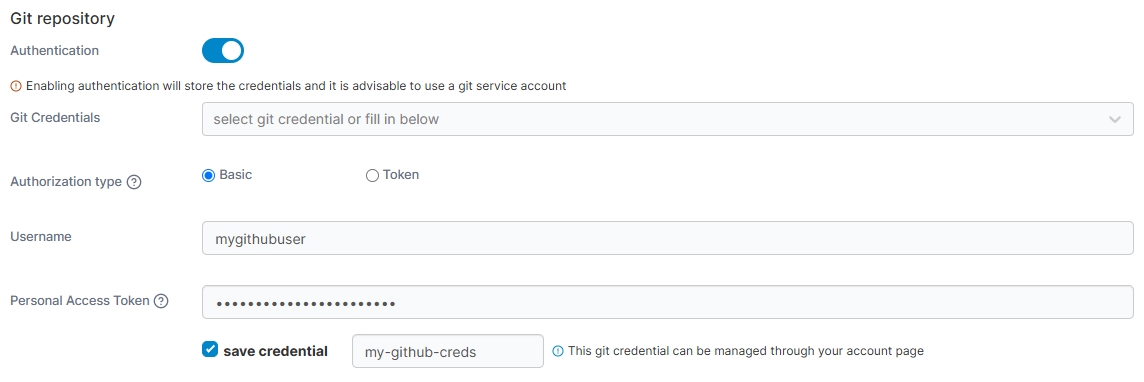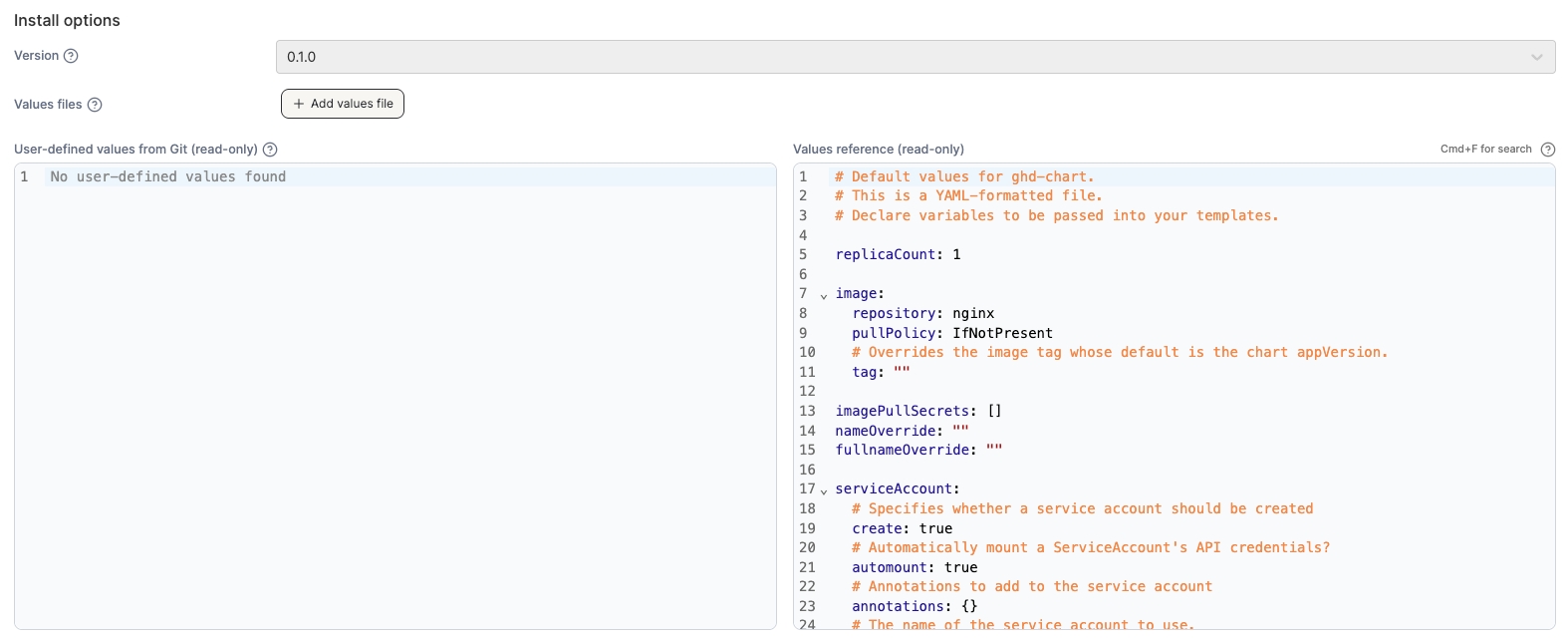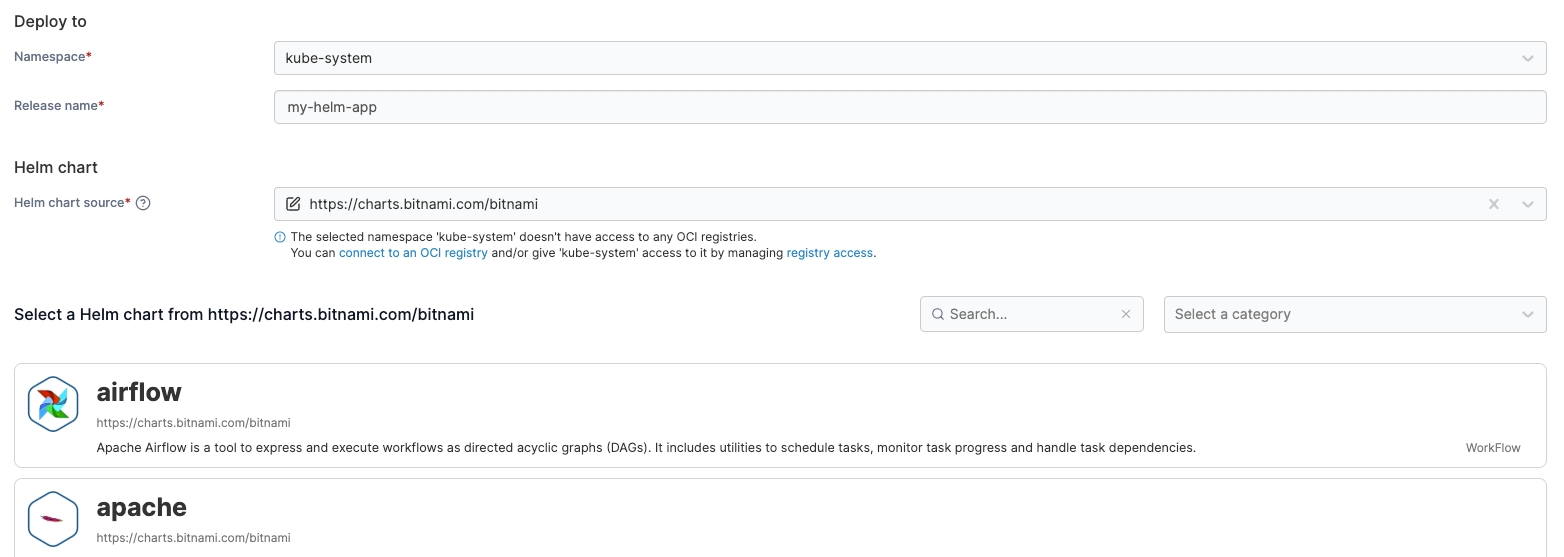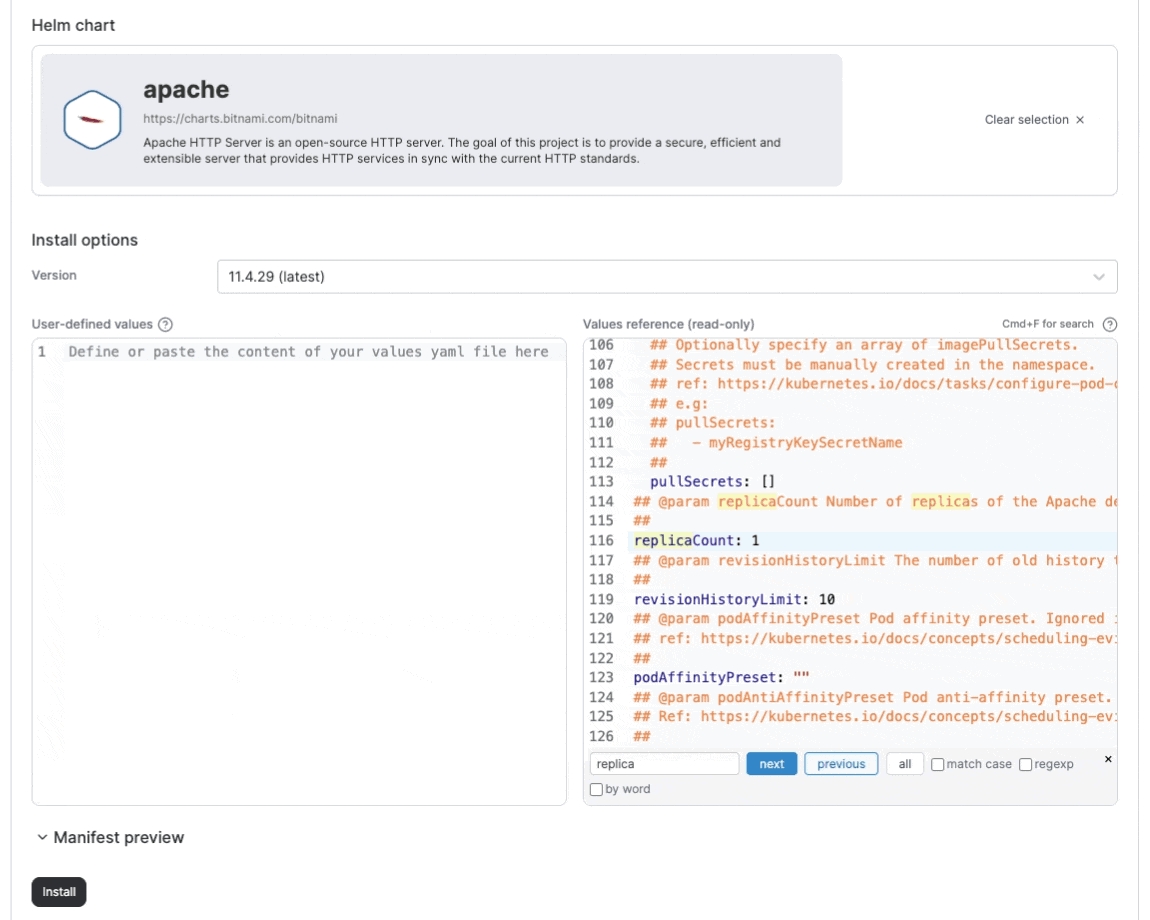Create an application from a Helm chart
When creating an application from a Helm chart, you can deploy it from either a Git repository or a Helm repository. First, select your deployment method in the Deploy from section.

Git repository
Use the provided fields to enter the details of your Git repository containing your Helm chart and values files.
When an application is deployed from Git, Portainer will clone the entire Git repository as part of the deployment process. Ensure you have enough free space to accommodate this.
Portainer's Git deployment functionality does not currently support the use of Git submodules. If your repository includes submodules, they will not be pulled as part of the deployment. We hope to add support for submodules in a future release.
Authentication
Toggle this on if your repository requires authentication.
Git Credentials
If the Authentication toggle is enabled and you have configured individual or shared Git credentials, you can select them from this dropdown. Shared Git credentials can be identified with the Shared tag, and are only available to administrators at present. Leave this field unset to provide new credentials.
Authorization type
Select either Basic or Token authorization depending on what your Git repository requires. For example, GitHub, GitLab, and Bitbucket Cloud expect Basic Auth, even when using an API or access token.
Username
Enter your Git username.
Personal Access Token
Enter your personal access token or password.
Save credential
Check this option to save the credentials entered above for future use under the name provided in the credential name field.

Repository URL
Enter the repository URL. If you have enabled Authentication above the credentials will be used to access the repository. The below options will be populated by what is found in the repository.
Skip TLS Verification
Toggle this on to skip the verification of TLS certificates used by your repository. This is useful if your repo uses a self-signed certificate.
Repository reference
Select the reference to use when deploying the stack (for example, the branch).

Automatic updates
Enabling GitOps updates gives Portainer the ability to update your application automatically, either by polling the repository at a defined interval for changes or by using a webhook to trigger an update.
If your application is configured for GitOps updates and you make changes locally, these changes will be overridden by the application definition in the Git repository. Bear this in mind when making configuration changes.
Mechanism
Choose from Polling or Webhook.
Fetch interval
When using the Polling method, choose how often you wish to check the Git repository for updates to your application.
Webhook
When using the Webhook method, this displays the webhook URL to use. Click Copy link to copy the webhook to your clipboard. For more on webhooks, refer to the webhook documentation.
Always upgrade Helm release to ensure compliance with source
Enable this setting to ensure a Helm upgrade is always performed when a redeploy is triggered via a webhook or polling, even if Portainer detects no changes between the Git repository and the last local pull.
This is useful if you treat your Git repository as the source of truth and are comfortable with any changes made directly to resources in the cluster being overwritten.


Deploy to
Once you have selected a Namespace for your Helm deployment you will need to specify a Release name for your deployment.

Helm chart
From the dropdown, select the Helm chart source you want to pull from, and enter the Helm chart path. The path must point to a folder that includes a Chart.yaml file.

Install options
Under Install options, you can view the Version of the Helm chart as defined in the Chart.yaml file from the specified Helm chart path. This field is read-only and cannot be changed.
You can also specify one or more Values files to override the default chart values. If multiple files are provided, they are merged in the order listed, with the last file taking precedence.
User-defined values from Git and Values reference are displayed side by side, showing the values that will be applied during the creation of the application. These views are read-only.

When you're ready, click Deploy.
Helm repository
Once you have selected a Namespace for your Helm deployment, specify a Release name for your deployment.
Next, choose a Helm chart source from the dropdown. Portainer will pull the available chart list from the selected registry and display them below. Select a chart to use from the list. You can search within the list or filter by category.

Once you have selected a chart, Portainer will import the values.yaml file for the latest version of the chart and display it in the right hand pane as a reference. You can make any necessary customizations to the values.yaml file in the left-hand pane. You can also choose to deploy a different version of the chart by choosing the version from the Version dropdown. To view a preview of the manifest you will create when you deploy the Helm chart, click the Manifest preview heading.
Once you've made your customizations, click Install to begin the deployment.

Was this helpful?